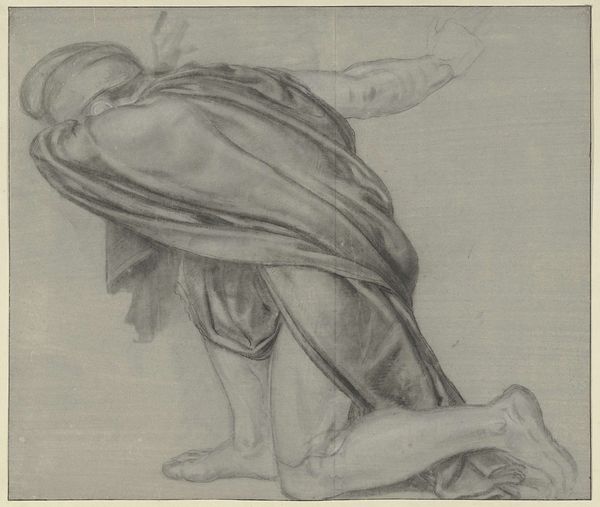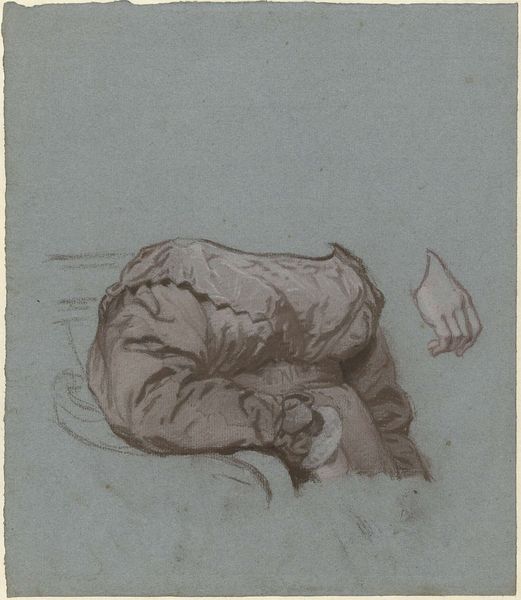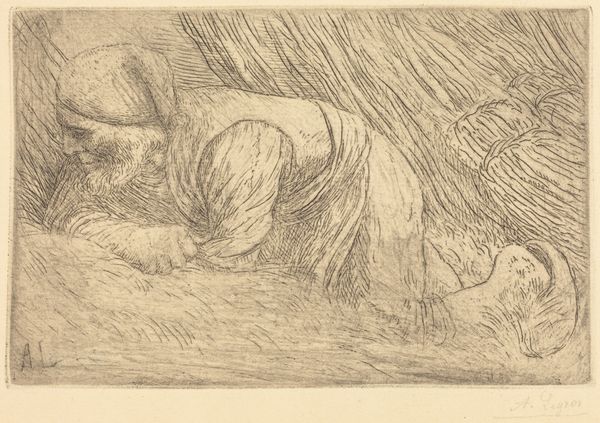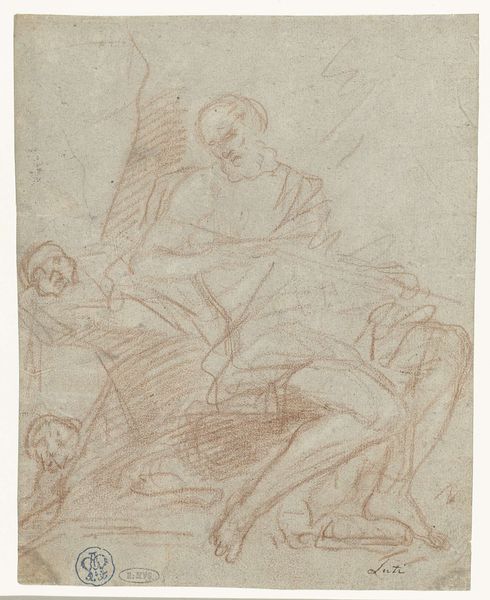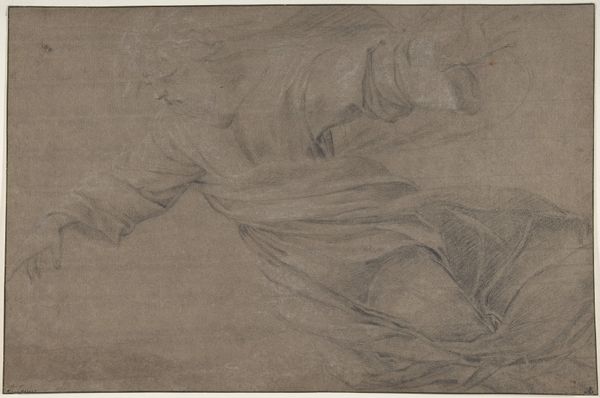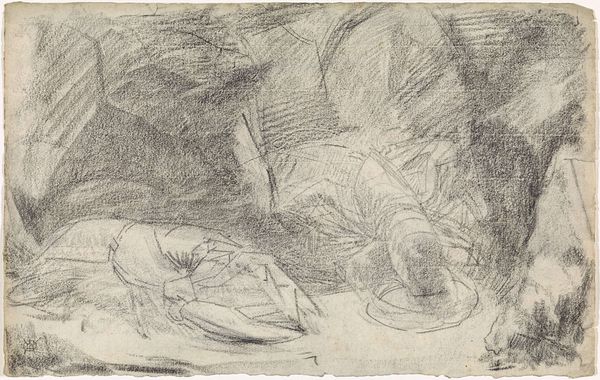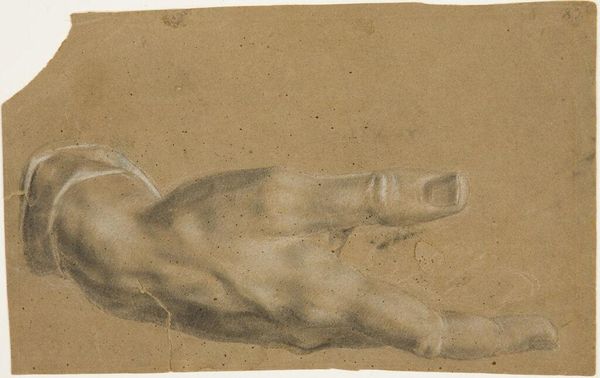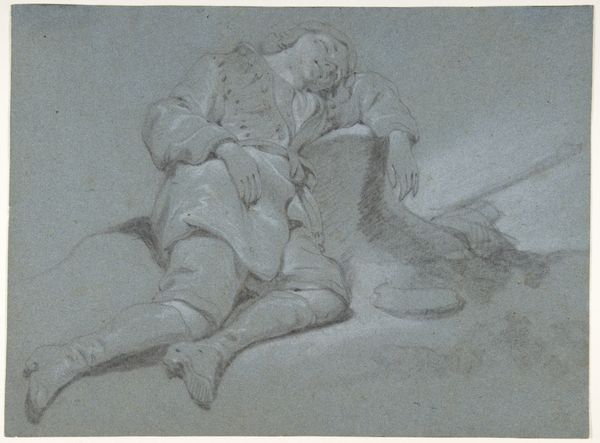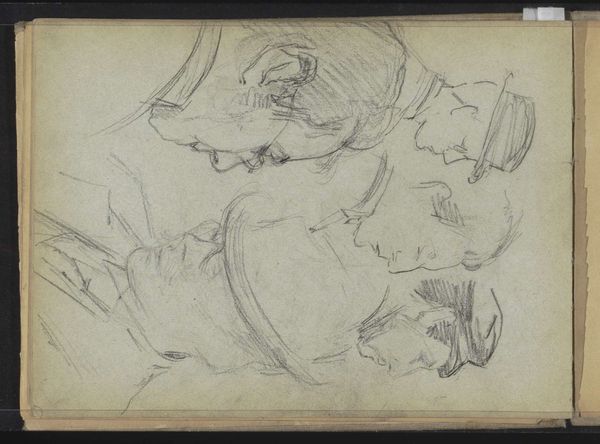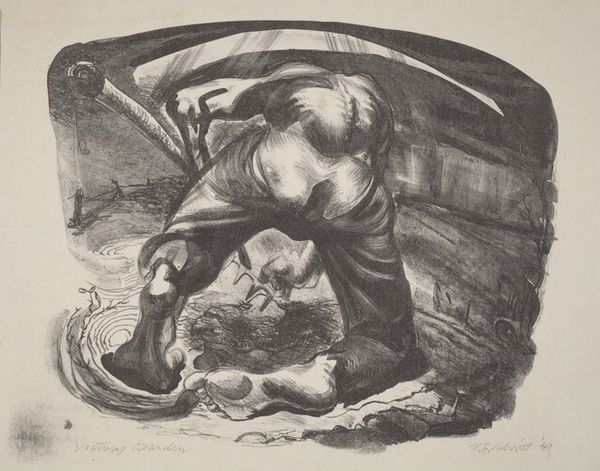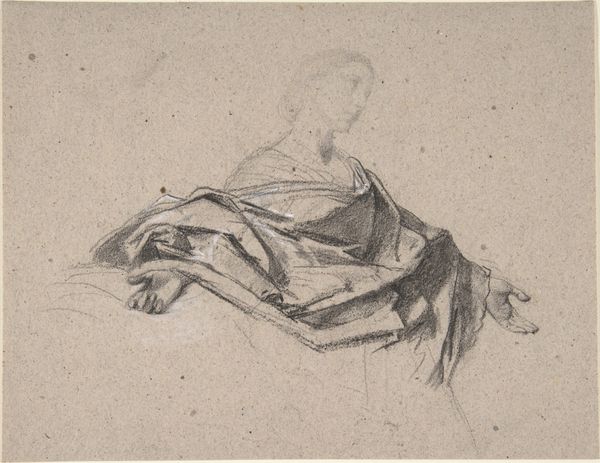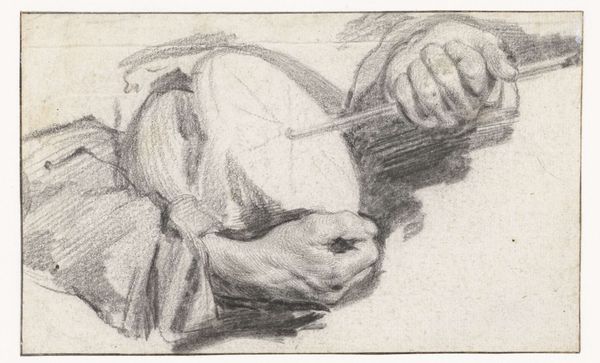
drawing, graphite
#
portrait
#
pencil drawn
#
drawing
#
charcoal drawing
#
mannerism
#
figuration
#
pencil drawing
#
graphite
#
portrait drawing
#
history-painting
Dimensions: height 224 mm, width 342 mm
Copyright: Rijks Museum: Open Domain
Giacomo Cavedone created this model study of a man leaning over a table with chalk. During the late Renaissance, life drawing became integral to academic artistic training. Cavedone and his contemporaries often used these studies to prepare for larger, more complex compositions. But what does it mean to be bent over in this way? Is the man sleeping? Or is his posture suggestive of despair or deep thought? In Cavedone’s Italy, depictions of men often carried connotations of power, intellect, or religious virtue. Yet, here, we see vulnerability, a departure from the idealized masculine forms that dominated the era. This choice might reflect Cavedone’s own experiences. After losing his wife and children to the plague, Cavedone reputedly became withdrawn. This drawing therefore becomes an intimate reflection on personal loss and the quiet moments of human experience.
Comments
rijksmuseum about 2 years ago
⋮
This boy’s tense outstretched arms suggest that he is actually carrying something. It is clear that Cavedone drew after a live model whom he had pose especially in this position. The study was probably used for an altarpiece by Cavedone’s teacher, Ludovico Caracci. This figure occurs in it, in a slightly different attitude, holding the feet of St Sebastian’s lifeless body.
Join the conversation
Join millions of artists and users on Artera today and experience the ultimate creative platform.
